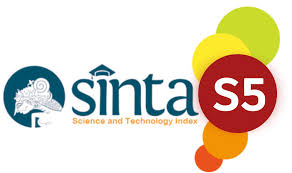Korupsi dan penerimaan pajak: Systematic literature review
DOI:
https://doi.org/10.54957/jolas.v5i1.1483Kata Kunci:
Corruption, Fiscal Policy, Governance, Tax Administration, Tax Compliance, Tax RevenueAbstrak
Penelitian ini mengkaji hubungan antara korupsi dan penerimaan pajak (tax revenue) melalui pendekatan Systematic Literature Review (SLR). Dengan menganalisis 87 artikel ilmiah yang diterbitkan dalam jurnal terindeks Scopus dan Web of Science selama periode 2000-2024, penelitian ini mengidentifikasi pola, tren, dan kesenjangan pengetahuan mengenai dampak korupsi terhadap penerimaan pajak. Hasil SLR menunjukkan konsensus kuat bahwa korupsi berdampak negatif terhadap penerimaan pajak, namun dengan variasi signifikan dalam besaran efek berdasarkan konteks institusional, jenis pajak, dan metode pengukuran. Analisis menunjukkan lima mekanisme utama yang menghubungkan korupsi dengan penurunan penerimaan pajak: (1) penggelapan dan penghindaran pajak, (2) pertumbuhan ekonomi informal, (3) distorsi kebijakan fiskal, (4) erosi kepercayaan wajib pajak, dan (5) efisiensi administrasi perpajakan yang rendah. Penelitian ini juga mengidentifikasi variabel moderator penting, termasuk kualitas institusi, transparansi fiskal, dan digitalisasi administrasi pajak. Temuan SLR ini berkontribusi pada pengembangan kerangka konseptual integratif mengenai hubungan korupsi-penerimaan pajak dan menyarankan agenda penelitian masa depan yang menekankan pendekatan interdisipliner, penelitian berbasis mikro-data, dan eksplorasi mengenai dampak reformasi anti-korupsi terhadap penerimaan pajak di berbagai konteks.
Referensi
Abed, G. T., & Gupta, S. (Eds.). (2002). Governance, corruption, and economic performance. International Monetary Fund.
Acemoglu, D., & Robinson, J. A. (2012). Why nations fail: The origins of power, prosperity, and poverty. Crown Books.
Allingham, M. G., & Sandmo, A. (1972). Income tax evasion: A theoretical analysis. Journal of Public Economics, 1(3-4), 323-338. https://doi.org/10.1016/0047-2727(72)90010-2
Alm, J., Martinez-Vazquez, J., & McClellan, C. (2016). Corruption and firm tax evasion. Journal of Economic Behavior & Organization, 124, 146-163. https://doi.org/10.1016/j.jebo.2015.10.006
Alt, J. E., & Lassen, D. D. (2006). Transparency, political polarization, and political budget cycles in OECD countries. American Journal of Political Science, 50(3), 530-550. https://doi.org/10.1111/j.1540-5907.2006.00200.x
Attila, G., Chambas, G., & Combes, J. L. (2009). Corruption and mobilisation of public revenues: An econometric analysis. Recherches Économiques de Louvain, 75(2), 229-268. https://doi.org/10.3917/rel.752.0229
Bahl, R., & Bird, R. (2018). Fiscal decentralization and local finance in developing countries: Development from below. Edward Elgar Publishing.
Barone, G., & Mocetti, S. (2011). Tax morale and public spending inefficiency. International Tax and Public Finance, 18(6), 724-749. https://doi.org/10.1007/s10797-011-9174-z
Besley, T., & McLaren, J. (1993). Taxes and bribery: The role of wage incentives. The Economic Journal, 103(416), 119-141. https://doi.org/10.2307/2234340
Besley, T., & Persson, T. (2014). Why do developing countries tax so little? Journal of Economic Perspectives, 28(4), 99-120. https://doi.org/10.1257/jep.28.4.99
Bird, R. M., Martinez-Vazquez, J., & Torgler, B. (2008). Tax effort in developing countries and high income countries: The impact of corruption, voice and accountability. Economic Analysis and Policy, 38(1), 55-71. https://doi.org/10.1016/S0313-5926(08)50006-3
Bird, R. M., Martinez-Vazquez, J., & Torgler, B. (2014). Societal institutions and tax effort in developing countries. Annals of Economics and Finance, 15(1), 301-351.
Blackburn, K., Bose, N., & Haque, M. E. (2006). The incidence and persistence of corruption in economic development. Journal of Economic Dynamics and Control, 30(12), 2447-2467. https://doi.org/10.1016/j.jedc.2005.07.007
Boly, A., Gillanders, R., & Miettinen, T. (2019). Deterrence, contagion, and legitimacy in anticorruption policy making: An experimental analysis. The Journal of Legal Studies, 48(2), 275-305. https://doi.org/10.1086/705599
Braun, V., & Clarke, V. (2006). Using thematic analysis in psychology. Qualitative Research in Psychology, 3(2), 77-101. https://doi.org/10.1191/1478088706qp063oa
Buchanan, J. M., & Tullock, G. (1962). The calculus of consent: Logical foundations of constitutional democracy. University of Michigan Press.
Chander, P., & Wilde, L. (1992). Corruption in tax administration. Journal of Public Economics, 49(3), 333-349. https://doi.org/10.1016/0047-2727(92)90072-N
Cyan, M. R., Koumpias, A. M., & Martinez-Vazquez, J. (2016). The determinants of tax morale in Pakistan. Journal of Asian Economics, 47, 23-34. https://doi.org/10.1016/j.asieco.2016.09.002
De Simone, E., Gaeta, G. L., & Mourão, P. R. (2017). The impact of fiscal transparency on corruption: An empirical analysis based on longitudinal data. The B.E. Journal of Economic Analysis & Policy, 17(4). https://doi.org/10.1515/bejeap-2017-0021
Dreher, A., & Schneider, F. (2010). Corruption and the shadow economy: An empirical analysis. Public Choice, 144(1), 215-238. https://doi.org/10.1007/s11127-009-9513-0
Fisman, R., & Svensson, J. (2007). Are corruption and taxation really harmful to growth? Firm-level evidence. Journal of Development Economics, 83(1), 63-75. https://doi.org/10.1016/j.jdeveco.2005.09.009
Friedman, E., Johnson, S., Kaufmann, D., & Zoido-Lobaton, P. (2000). Dodging the grabbing hand: The determinants of unofficial activity in 69 countries. Journal of Public Economics, 76(3), 459-493. https://doi.org/10.1016/S0047-2727(99)00093-6
Gaspar, V., Jaramillo, L., & Wingender, P. (2019). Tax capacity and growth: Is there a tipping point? International Tax and Public Finance, 26(6), 1329-1354. https://doi.org/10.1007/s10797-019-09531-2
Gauthier, B., & Goyette, J. (2014). Taxation and corruption: Theory and firm-level evidence from Uganda. Applied Economics, 46(23), 2755-2765. https://doi.org/10.1080/00036846.2014.909580
Ghura, D. (1998). Tax revenue in sub-Saharan Africa: Effects of economic policies and corruption. IMF Working Paper, 98(135). https://doi.org/10.5089/9781451855685.001
Gupta, A. S. (2007). Determinants of tax revenue efforts in developing countries. IMF Working Paper, 07(184). https://doi.org/10.5089/9781451867480.001
Hillman, A. L. (2004). Corruption and public finance: An IMF perspective. European Journal of Political Economy, 20(1), 1-16. https://doi.org/10.1016/j.ejpoleco.2003.09.004
Hong, Q. N., Pluye, P., Fàbregues, S., Bartlett, G., Boardman, F., Cargo, M., Dagenais, P., Gagnon, M.-P., Griffiths, F., Nicolau, B., O'Cathain, A., Rousseau, M.-C., & Vedel, I. (2018). Mixed Methods Appraisal Tool (MMAT), version 2018. Registration of Copyright (#1148552), Canadian Intellectual Property Office.
Imam, P. A., & Jacobs, D. F. (2014). Effect of corruption on tax revenues in the Middle East. Review of Middle East Economics and Finance, 10(1), 1-24. https://doi.org/10.1515/rmeef-2014-0001
Johnson, S., Kaufmann, D., McMillan, J., & Woodruff, C. (2000). Why do firms hide? Bribes and unofficial activity after communism. Journal of Public Economics, 76(3), 495-520. https://doi.org/10.1016/S0047-2727(99)00094-8
Klitgaard, R. (1988). Controlling corruption. University of California Press.
Liu, Y., & Feng, H. (2015). Tax structure and corruption: Cross-country evidence. Public Choice, 162(1), 57-78. https://doi.org/10.1007/s11127-014-0194-y
Moher, D., Liberati, A., Tetzlaff, J., & Altman, D. G. (2009). Preferred reporting items for systematic reviews and meta-analyses: The PRISMA statement. PLoS Medicine, 6(7), e1000097. https://doi.org/10.1371/journal.pmed.1000097
North, D. C. (1990). Institutions, institutional change and economic performance. Cambridge University Press.
Petticrew, M., & Roberts, H. (2006). Systematic reviews in the social sciences: A practical guide. Blackwell Publishing.
Reinikka, R., & Svensson, J. (2005). Fighting corruption to improve schooling: Evidence from a newspaper campaign in Uganda. Journal of the European Economic Association, 3(2-3), 259-267. https://doi.org/10.1162/jeea.2005.3.2-3.259
Rosid, A., Evans, C., & Tran-Nam, B. (2018). Tax non-compliance and perceptions of corruption: Policy implications for developing countries. Bulletin of Indonesian Economic Studies, 54(1), 25-60. https://doi.org/10.1080/00074918.2017.1364349
Schneider, F., & Enste, D. H. (2000). Shadow economies: Size, causes, and consequences. Journal of Economic Literature, 38(1), 77-114. https://doi.org/10.1257/jel.38.1.77
Tanzi, V., & Davoodi, H. (2000). Corruption, growth, and public finances. IMF Working Paper, 00(182). https://doi.org/10.5089/9781451859256.001
Torgler, B. (2005). Tax morale in Latin America. Public Choice, 122(1), 133-157. https://doi.org/10.1007/s11127-005-5790-4
Tranfield, D., Denyer, D., & Smart, P. (2003). Towards a methodology for developing evidence-informed management knowledge by means of systematic review. British Journal of Management, 14(3), 207-222. https://doi.org/10.1111/1467-8551.00375
World Bank. (2020). Enhancing government effectiveness and transparency: The fight against corruption. World Bank Group.
Unduhan
Diterbitkan
Cara Mengutip
Terbitan
Bagian
Lisensi
Hak Cipta (c) 2025 Alif Sukhairi Wijaya, Suparna Wijaya

Artikel ini berlisensi Creative Commons Attribution 4.0 International License.











